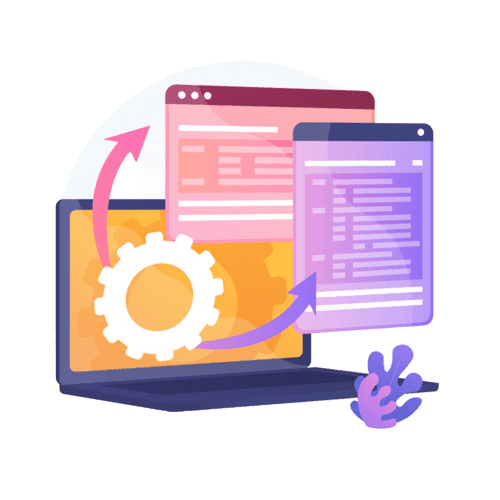Explore the impact of formal women’s networks in engineering, examining how internal and external networks empower female engineers, provide career support, and foster collective resistance against gender inequality in the profession. It draws on feminist theories of power and recent research findings.
Enhancing Business Success Through Effective Traceability: Lessons from Industry
In today’s fast-paced and highly regulated industries, traceability is crucial for maintaining quality and ensuring compliance with safety standards. By effectively implementing traceability practices, companies can track and link project artifacts throughout the product lifecycle, ensuring that customer requirements are met and regulatory obligations are fulfilled. This not only enhances the reliability of products and services but also strengthens the organization’s reputation and competitive edge in the market.

In today’s competitive market, businesses offering services related to ISO standards, IATF standards, VDA standards, and other critical compliance frameworks must prioritize the implementation of traceability in their operational processes. Traceability is the practice of tracking and linking various artifacts, such as requirements, designs, and test cases, throughout the lifecycle of a project. This approach ensures quality, compliance, and accountability, especially in safety-critical domains like medical devices, automotive, and aerospace. Drawing from practical experiences and insights, this blog post discusses the critical importance of traceability and offers valuable lessons for companies providing training, mentoring, consulting, and other services related to these standards.
The Importance of Traceability in Safety-Critical Industries
Traceability has emerged as a cornerstone in industries where safety and quality are paramount. As outlined in the paper Assessing Traceability—Practical Experiences and Lessons Learned, traceability is essential for meeting regulatory requirements and ensuring that software development processes are both effective and efficient. For example, the Food and Drug Administration (FDA) mandates that software requirements are traceable to system requirements and risk analysis results, ensuring that all software codes are linked to established specifications and test procedures. Similarly, traceability is crucial in automotive standards like IATF 16949 and VDA, where it ensures compliance with safety and quality management protocols.
%
defects remaining undetected
According to a study published by the National Institute of Standards and Technology (NIST), poor traceability in software development can result in up to 80% of defects remaining undetected until the testing phase, significantly increasing the cost of fixing these issues by up to 100 times compared to addressing them during the requirements stage.
%
reduction in project overruns
The International Data Corporation (IDC) reports that organizations implementing comprehensive traceability practices see a 20% reduction in project overruns and a 30% decrease in compliance-related incidents, demonstrating the significant impact of traceability on both project efficiency and regulatory adherence.
Barriers to Implementing Traceability
Despite its importance, many organizations face significant barriers to implementing effective traceability. Common challenges include the complexity and cost associated with building and maintaining a requirements traceability matrix, which can be time-consuming and error-prone. Additionally, there is often a lack of awareness and guidance on how to implement traceability, leading to inconsistencies and gaps in the traceability process. These barriers are exacerbated by differing stakeholder perceptions, with some viewing traceability as a means of micromanaging their work rather than a tool for enhancing quality and compliance.
Without traceability, there can be no quality. You can’t manage what you don’t measure, and traceability is the key to understanding and improving every step in the process.
Practical Approaches to Improving Traceability
To address these challenges, companies should consider adopting a structured traceability process assessment model (PAM). The development and validation of such a model, as demonstrated in the case study of two medical device organizations, can identify strengths and weaknesses in an organization’s traceability practices. This assessment framework typically includes evaluating traceability across change management, risk management, and software development lifecycle (SDLC) processes.
Key Strategies for Implementing Effective Traceability
Automate Traceability Processes
Automation can significantly reduce the time and effort required to maintain traceability. Using tools that support the Open Services for Lifecycle Collaboration (OSLC) initiative can streamline the integration of various lifecycle tools and provide dynamic traceability that evolves with ongoing changes.
Adopt Best Practices
Implementing best practices, such as establishing a clear company policy on traceability and developing standard operating procedures, can help institutionalize traceability across projects. Regular training and availability of resources are essential to ensure that staff understand and adhere to these practices.
Leverage Industry-Specific Models
Tailoring the traceability framework to meet industry-specific standards, such as Automotive SPICE for the automotive and medical device sectors, can help align traceability practices with regulatory requirements and best practices.
Regular Assessments and Continuous Improvement
Conducting regular assessments using a traceability PAM allows organizations to identify areas of improvement and make necessary adjustments. This approach not only ensures compliance but also enhances the overall quality and safety of the product.
Conclusion
Effective traceability is not just about meeting regulatory requirements; it is a strategic asset that enhances quality, safety, and customer satisfaction. By overcoming barriers through automation, best practices, and regular assessments, companies can improve their traceability processes, thereby ensuring compliance with ISO, IATF, and VDA standards. This commitment to traceability will ultimately lead to better project outcomes, reduced risks, and enhanced market competitiveness. Whether in training, consulting, or implementation, embracing traceability is a step towards achieving excellence in service delivery and operational efficiency.
Wanna know more? Let's dive in!
Mastermind Best Practices
Mastermind meetings offer business owners a collaborative space to share insights, solve challenges, and stay accountable. This guide explores best practices for successful mastermind groups, including clear goals, structured agendas, and fostering trust, ensuring participants gain valuable feedback, creative solutions, and long-term growth opportunities.
Five Relational Strategies for Mentoring
We explores five relational mentoring strategies, based on Relational Cultural Theory, to empower women professionals across industries. Emphasizing mutuality, authenticity, and connection, these strategies address power dynamics, foster growth, and build supportive networks, helping women navigate and thrive in their careers.
Coaching and Mentoring: Two Sides of the Same Coin?
Coaching and mentoring, while distinct in theory, often overlap in practice. Both aim to foster personal and professional growth. Context plays a key role in determining which approach is most effective, with organizations blending elements of both to meet diverse developmental needs.
The Professionalization of Mentoring Practices
Unlocking the full potential of mentoring means tackling some key issues head-on, like integrating the latest research, following best practices, understanding the dynamics of mentoring relationships, and aligning goals between mentors and mentees.
Holistic Mentoring Framework
The Holistic Mentoring Framework offers a holistic approach to mentoring, focusing on professional development, emotional well-being, and individualized support. By fostering trust and nonjudgmental relationships, it empowers early career professionals across industries to thrive, promoting continuous growth and addressing their unique challenges.
Best Practices in Mentoring: A Comprehensive Guide
Mentoring is like your personal growth hack. It’s all about connecting with someone who’s been there, done that, and leveling up together. It’s not just career tips – it’s real talk, learning, and support that helps you crush your goals.
ISO 9001 Gets a Glow-Up: Climate Edition
ISO 9001 Goes Green: The iconic quality management standard now includes climate action, pushing businesses to integrate eco-friendly practices. Get ready for a greener, cleaner approach to quality that’s all about saving the planet—one process at a time.
Understanding Organizational Constraints and Their Impact on Employee Engagement: A Comprehensive Overview
Explore how organizational constraints impact employee work engagement and why aligning team perceptions of these constraints is crucial for fostering a motivated and productive workforce. This article delves into the types of constraints, the role of perceptual congruence, and practical strategies for enhancing engagement in the workplace.
Fostering Innovation: How Learning-Oriented Leadership Transforms Project Team
Discover a new leadership model designed to enhance learning within project teams. This socio-cognitive approach emphasizes making mental models explicit, resolving conflicts, and creating supportive social structures, empowering leaders to foster innovation, improve project outcomes, and drive long-term success in today’s dynamic and fast-paced business environment.
Revolutionizing Automotive Testing with Evidence-Based Software Engineering
Discover how automotive software testing processes enhances using Evidence-Based Software Engineering. This approach identifies key challenges, integrates industry best practices, and leverages empirical evidence to improve testing efficiency, quality, and compliance. Learn actionable strategies to streamline testing, manage requirements, automate processes, and ensure high safety standards in automotive software development.
Understanding Project Success: Perspectives from Different Stakeholder Groups
Understanding and aligning different stakeholder perspectives is crucial for achieving project success. This study explores how varying interpretations of project success criteria among senior management, project teams, and recipients can lead to project failure. A multiple stakeholder model is proposed to enhance collaboration and reduce the risk of unsuccessful outcomes.











